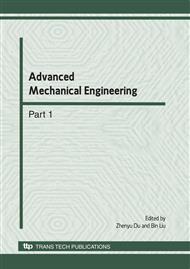p.750
p.754
p.758
p.764
p.770
p.776
p.780
p.785
p.789
Study on a Semi-Active Shock Isolation Technology with Magnetorheological Devices
Abstract:
A semi-active shock isolation technology with magnetorheological devices was systematically studied. The magnetorheological devices consist of magnetorheological dampers (MRD) and magnetorheological elstomers (MRE) isolator. Based on the method of Lyapunov function, the semi-active control strategy and the control algorithm were developed to minimize the relative movement of the system. The simulation results show that, compared with the passive devices, the semi-active control technology in the paper is effective to reduce the relative displacement and the shock acceleration of protected equipment. And the system will go back to the stable state within ultrashort time.
Info:
Periodical:
Pages:
770-775
Citation:
Online since:
June 2010
Authors:
Keywords:
Price:
Сopyright:
© 2010 Trans Tech Publications Ltd. All Rights Reserved
Share:
Citation:


